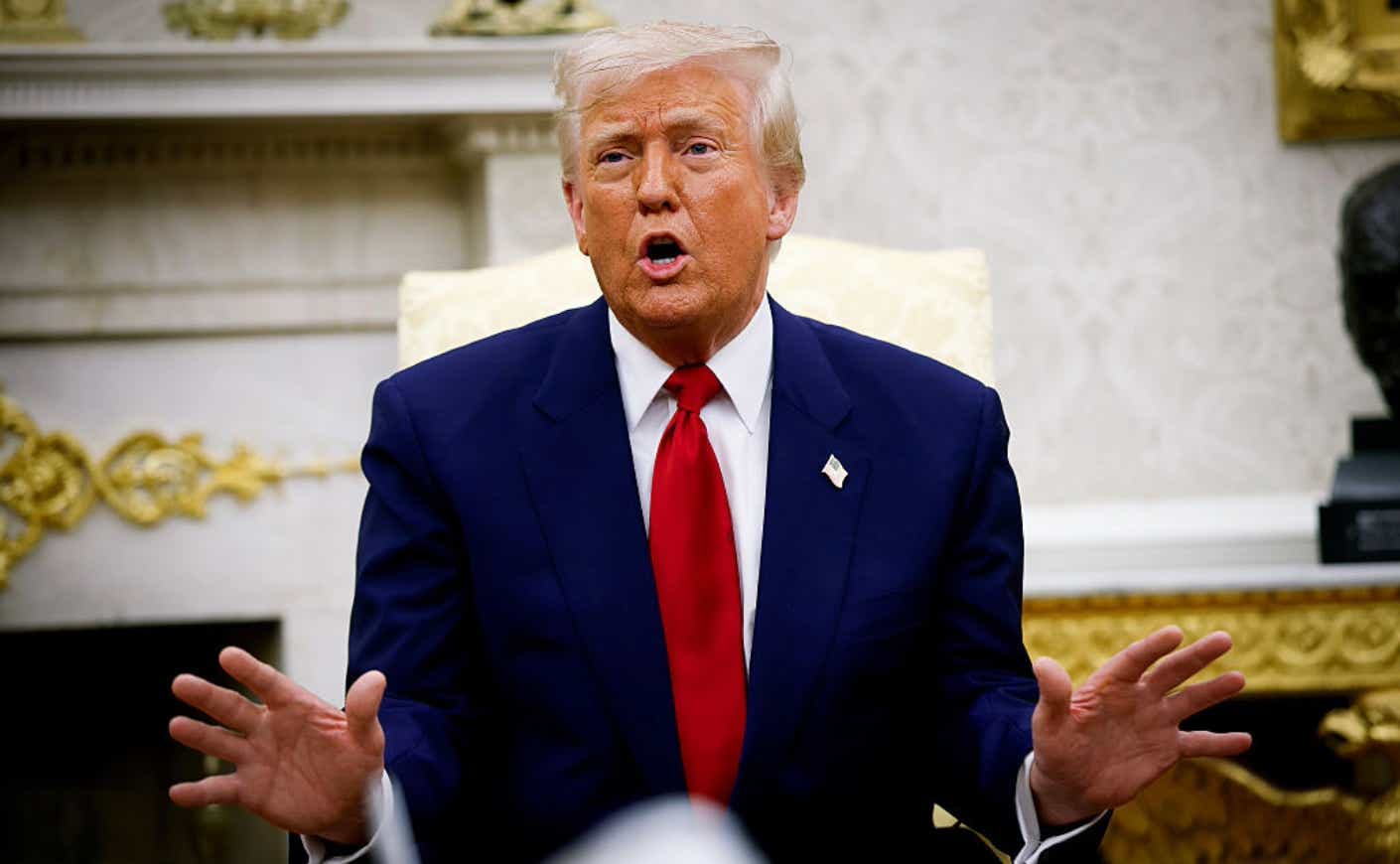President Trump’s tariff gamble is taking a toll on his popularity: A Reuters/Ipsos poll last week showed his approval rating sliding to 43%, down four points since January — but still slightly higher than the 40% he saw in his first term back in 2017.
Just a day before pausing tariffs for 90 days for most countries except China, Trump reassured political donors that he knows “what the hell I’m doing.” But his vacillation between boldness and retreat is starting to expose cracks in his party’s once-solid support. (And incidentally, Google searches for “why is trump doing this” are currently peaking.)
Some see this shift in polling as an opportunity for Democrats, who have been struggling with record-low approval ratings. Democratic strategist Crimson MacDonald told The Hill that the party should embrace a liberal populist message, like that of Sen. Bernie Sanders, which she believes could appeal to voters beyond the party’s base. “I think the Bernie Sanders message is going to resonate with independents because now it’s not just one side that’s angry and riled up,” she said.
What do the latest polls indicate about Americans’ thoughts on Trump? We took a closer look.
Is Trump’s approval rating dropping?
In the wake of President Trump’s April 2 “Liberation Day” announcement, a string of polls revealed slipping support for his policies, as voters grow increasingly wary of the potential economic fallout.
In fact, per a Wall Street Journal report on Friday, 52% of voters now disapprove of Trump’s handling of the economy, while 44% approve. That’s a 12-point jump from October, when just 40% held an unfavorable view of his economic plans. The same survey found that 54% of respondents oppose placing tariffs on imported goods, and the share who believe tariffs will drive up consumer prices rose from 68% in January, to 75% in March.
Voters apparently aren’t impressed with Trump’s priorities, either. In a CBS News/YouGov poll 64% of respondents said he’s not doing enough to bring down prices, while 55% said he’s spending too much time on tariffs, which they fear will only push costs up. Other polling has echoed this finding: Quinnipiac University poll found that 72 percent of Americans think that Trump’s tariff agenda will hurt the economy in the short term, while 53 percent said the new duties will also hamper the economy in the long term.
While this sentiment could certainly fluctuate, this dip is noteworthy because the economy was central to Trump’s campaign message in both 2016 and 2020, both of which led him to victories. In an exit survey taken in December, that issue was the top deciding factor in favor of Trump for voters in the seven main battleground states, including Georgia and Michigan, who ultimately voted for him.
The Republicans against Trump tariffs — and those in support
The Trump administration is urging patience, reminding critics that the midterms are still a year away and that the tariffs are just getting started.
But in public and behind closed doors, the messaging has been all over the map. In a National Republican Congressional Committee dinner on Tuesday, Trump said to donors that “these countries are calling us up, kissing my ass,” insisting they’re “dying to make a deal.” But today, he opted for a 90-day pause on all the “reciprocal” tariffs he’d previously announced, aside from that levied against China.
Even some Republicans are skeptical. Within his own party, doubts are growing, with senators like Chuck Grassley and Lisa Murkowski joining Democrats on a bill that would require presidents to justify new tariffs to Congress (along with five other Republican senators, as of press time). At a recent hearing, Grassley argued that Congress has “delegated too much authority to the president” on trade.
Meanwhile, in the House, GOP Rep. Don Bacon is preparing to introduce a companion bill, signaling growing resistance to Trump’s trade brinkmanship.
As polling data shifts and internal divisions over trade mount, these developments could reshape the administration’s legislative agenda and impact the GOP’s unity in the years ahead.









